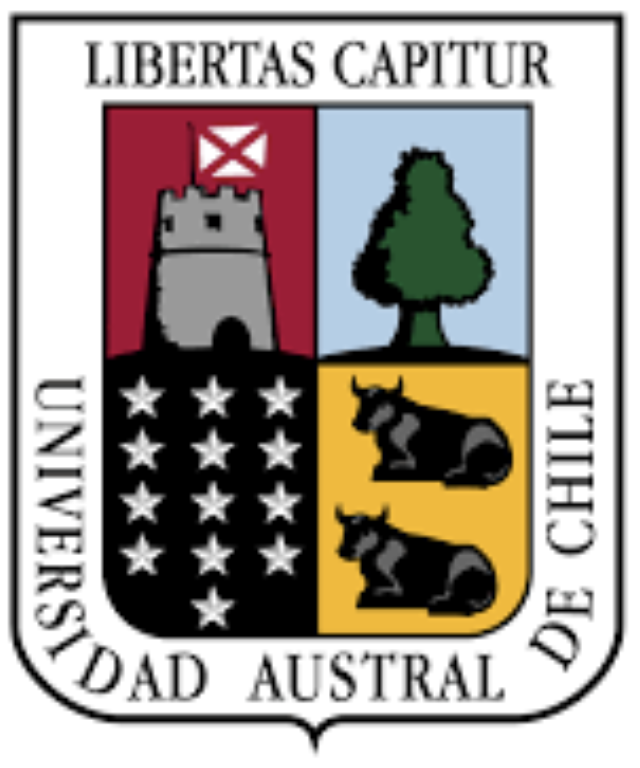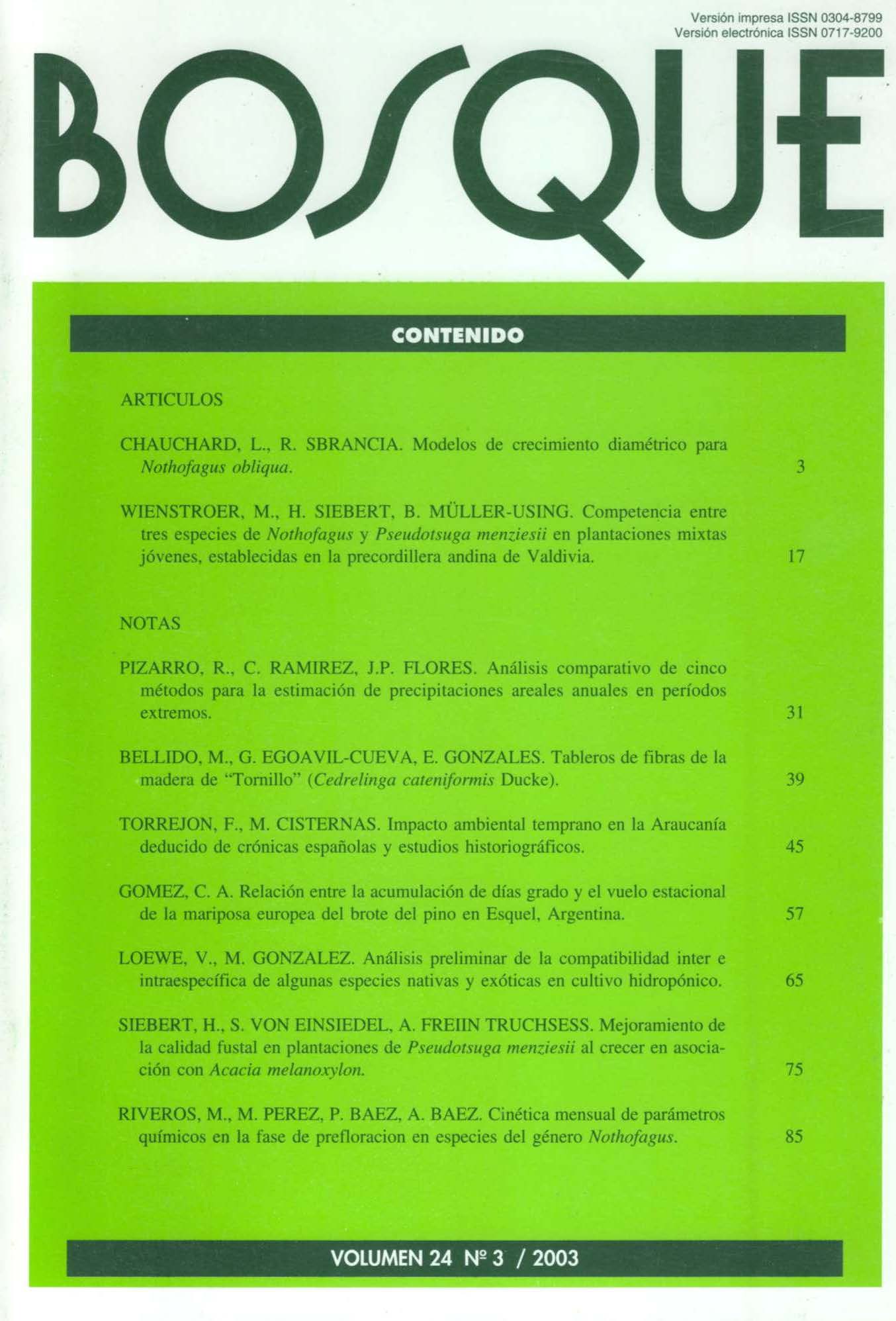Main Article Content
Dec 31, 2003
Abstract
Site conditions in the south of Chile, from Cautín to Llanquihue (38°S to 41°S), are well suited for Pseudotsuga menziesii crops. Despite 15,000 ha of P. menziesii plantations being planted to date, there is still little information on their management. To increase interest and research on this species, more acreage needs to be added and consideration given to high value wood production. At present, there are still doubts if the current management of P. menziesii in Chile will make possible the high value wood production required for international markets. Results in the present article demonstrate that the structure and volume of mixed P. menziesii stands have better characteristics for the production of higher value wood than pure stands. Furthermore, trees in mixed stands provide excellent continuous forest cover, a condition that would improve the long-term management of P. menziesii. The P. menziesiiA. melanoxylon association demonstrated a positive synergy, because A. melanoxylon decreased their bifurcation tendency while P. menziesii formed straight, uniform and self pruned stems.


